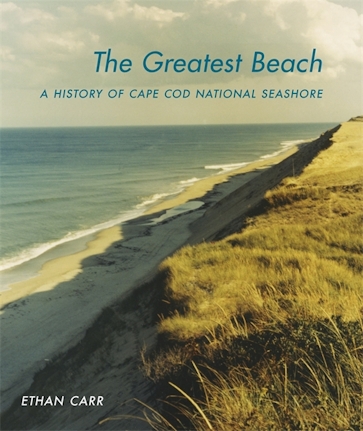The Greatest Beach
A History of the Cape Cod National Seashore
Title Details
Pages: 320
Illustrations: 195 color and b&w photos
Trim size: 9.000in x 10.000in
Formats
Hardcover
Pub Date: 06/01/2019
ISBN: 9-780-8203-5558-0
List Price: $41.95
Subsidies and Partnerships
Published in association with Library of American Landscape History
Published with the generous support of Southern Highlands Reserve
Related Subjects
NATURE / Ecosystems & Habitats / Oceans & Seas
TRAVEL / United States / Northeast / New England (CT, MA, ME, NH, RI, VT)
The Greatest Beach
A History of the Cape Cod National Seashore
How a renowned tourist destination became one of America’s most beloved and influential national parks
Skip to
- Description
- Reviews
In the mid-nineteenth century, Thoreau recognized the importance of preserving the complex and fragile landscape of Cape Cod, with its weathered windmills, expansive beaches, dunes, wetlands, harbors, and the lives that flourished here, supported by the maritime industries and saltworks. One hundred years later, the National Park Service—working with a group of concerned locals, then-senator John F. Kennedy, and other supporters—took on the challenge of meeting the needs of a burgeoning public in this region of unique natural beauty and cultural heritage.
To those who were settled in the remote wilds of the Cape, the impending development was threatening, and as the award-winning historian Ethan Carr explains, the visionary plan to create a national seashore came very close to failure. Success was achieved through unprecedented public outreach, as the National Park Service and like-minded Cape Codders worked to convince entire communities of the long-term value of a park that could accommodate millions of tourists. Years of contentious negotiations resulted in the innovative compromise between private and public interests now known as the “Cape Cod model.”
The Greatest Beach is essential reading for all who are concerned with protecting the nation’s gradually diminishing cultural landscapes. In his final analysis of Cape Cod National Seashore, Carr poses provocative questions about how to balance the conservation of natural and cultural resources in regions threatened by increasing visitation and development.
Published with the generous support of Southern Highlands Reserve Publications
—Rolf Diamant, former superintendent of Marsh-Billings-Rockefeller National Historical Park and Frederick Law Olmsted National Historic Site
—Julia Blakely, Smithsonian Magazine



